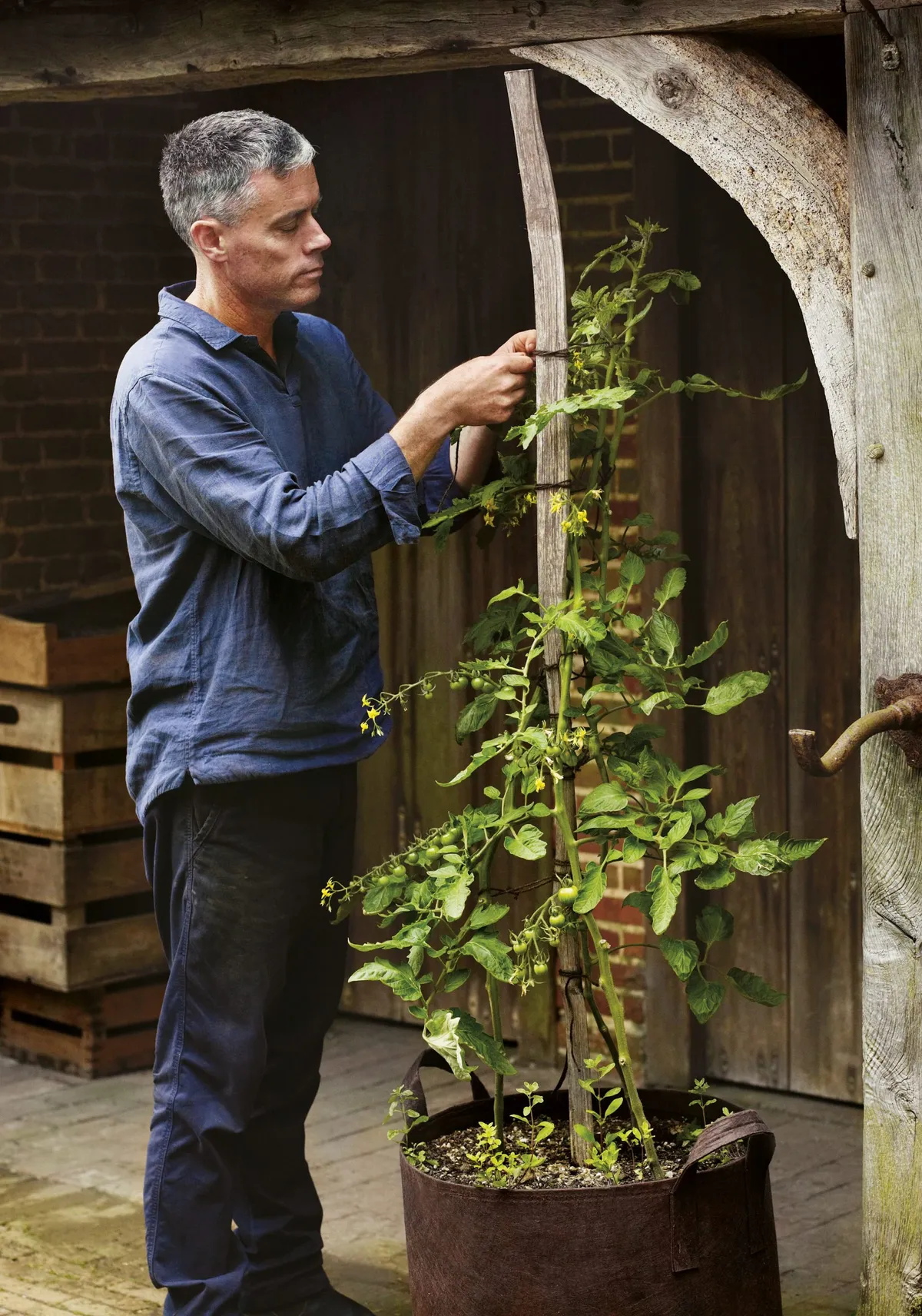Gardener and chef Aaron Bertelsen and head gardener Benjamin Pope pick the jobs you should be doing in the kitchen garden this month. Don't miss our round up of the best plants for June, what to plant in June and the gardens to visit this month.
Gardening jobs for June
Plant out brassica seedlings. In the ground, they will need to be around 45cm apart. I like to grow kale in a large pot, too, and these plants can be closer together – around 20cm seems to work well. These are hungry crops, and will need a good rich soil. They are also extremely popular with pigeons and that notorious scourge of the vegetable garden, the cabbage white caterpillar. I try to steer clear of chemical treatments and find that the best solution to both problems is to cover the plants in netting. Just make sure it stands clear of the leaves, or the butterflies will lay their eggs on them anyway. Aaron Bertelsen
Tomatoes should be in the ground by now. Don’t forget, a fully laden tomato plant is a heavy thing and will need a sturdy support. I like to use a chestnut stake, around 1.5m tall. Always put the stake in first, so that you’re not driving it through the root system of your plants later on. As the plants develop, remove the lower leaves and any lateral shoots – those that appear at an angle between the stem and the branches proper. AB

This is a good time for a second sowing of climbing beans, to extend the cropping season. Now that the soil is nicely warmed up, you can get away with sowing them direct. But as always, put the supports in first. AB

Make sure all plants that need support – beans, tomatoes, broad beans, peas – have them and where, appropriate, are firmly tied in. Winds can still be strong in the summer and as crops develop, plants will get heavier and so more vulnerable to being blown over and breaking. AB

Hygiene matters, in the garden as in so many other areas of life. As plants grow, keep them tidy by removing any old or damaged leaves, and keeping the soil around them clear of weeds. This will help to eliminate hiding places for pests – and help you to spot any problems with the plants and tackle them early on. AB
Crops in containers will be putting on a lot of growth now, and taking up a lot of nutrients from the compost they are planted in. You will need to compensate for this with regular feeding – I do it once a week, adding liquid seaweed to their water. You may also need to move pots further apart, to ensure that plants are getting enough light and air is circulating freely. AB
Read Aaron Bertelsen on growing vegetables in pots and pick the best vegetables to grow in your garden.

Apply shading to greenhouses. This will help reduce temperatures now summer has arrived. Use a physical barrier, such as hessian or shade mesh, or apply shade paint to the glass. Benjamin Pope

Summer-prune trained fruit. On apples and pears, shorten current season’s growth back to three buds, while apricot, cherry and peach fans should have entire sections of older stems or branches removed, tying in young replacement growth. BP
Net crops. Be ahead of the game and protect your crops. A combination of beanpoles and bird netting works well for most soft fruits, while butterfly netting will protect brassicas from caterpillar and pigeon damage. BP

Trim topiary. You should leave hedge trimming until late summer to avoid disturbing nesting birds, but clip topiaries now to give the garden a crisp look that contrasts nicely with soft planting. BP

Harvest herbs. Cutting and drying your own herbs now will provide ingredients through winter and encourage new fresh growth through summer. Simply cut, wash and hang somewhere away from sunlight to dry, before grinding and storing in jars. BP

